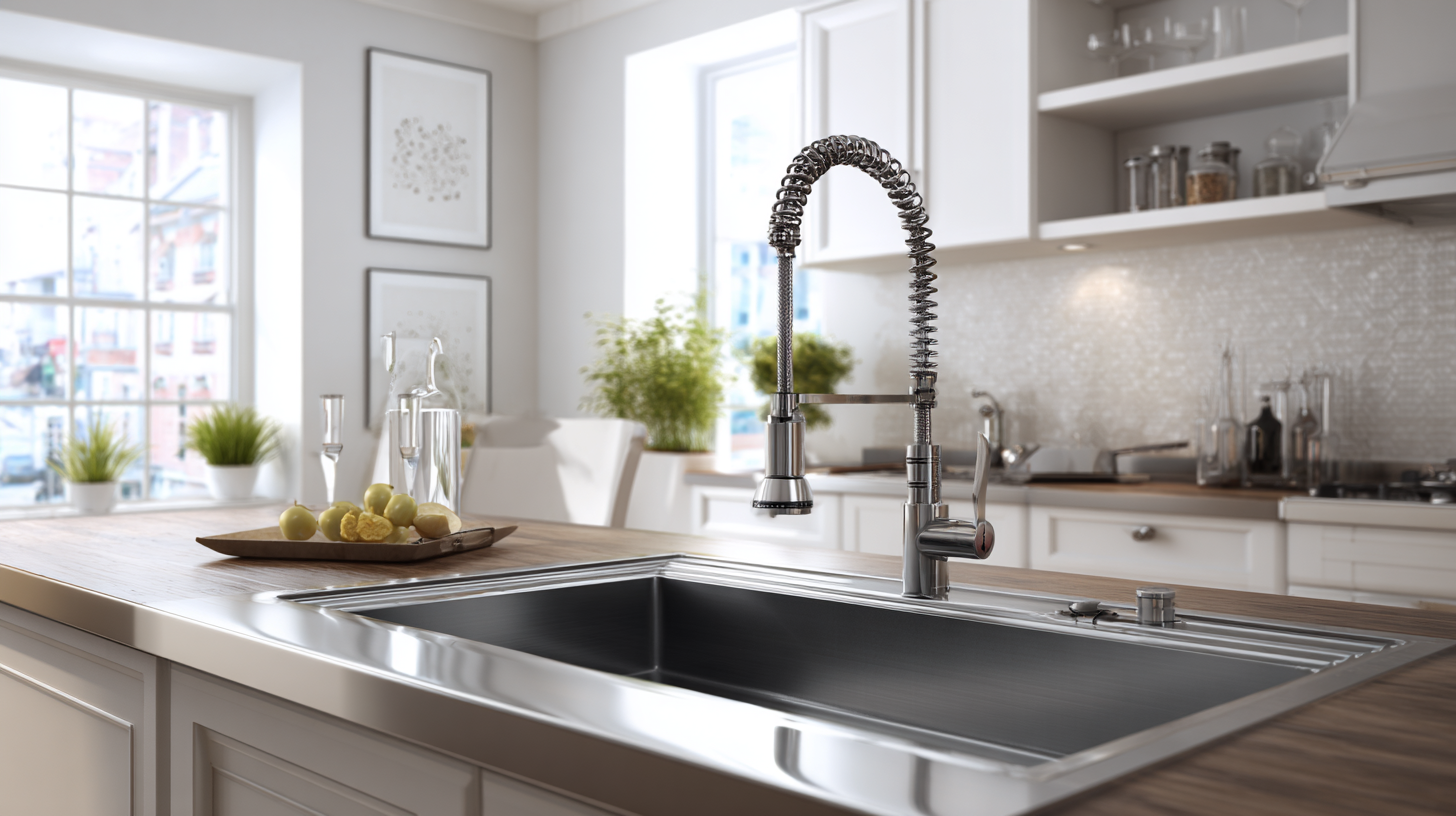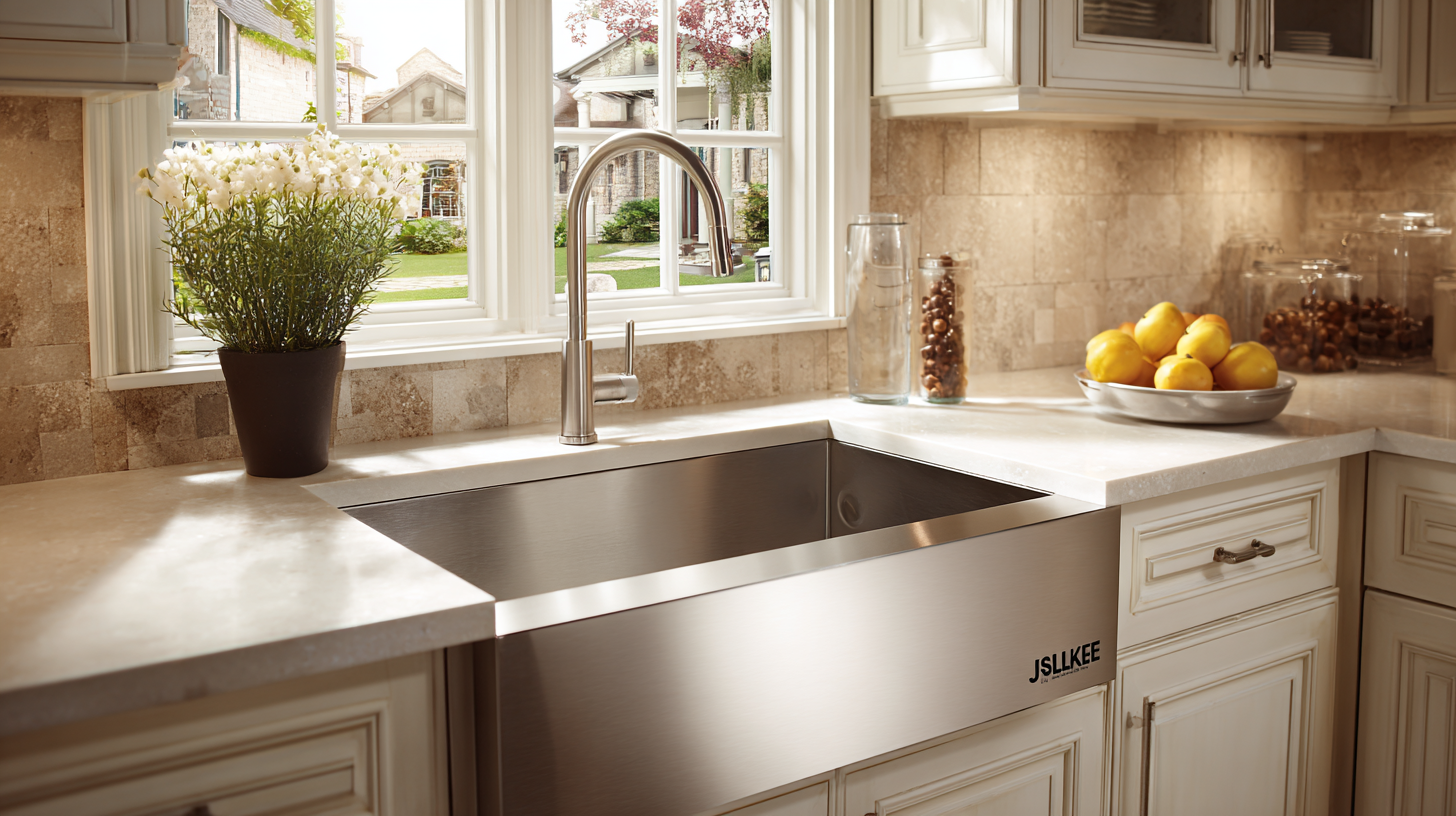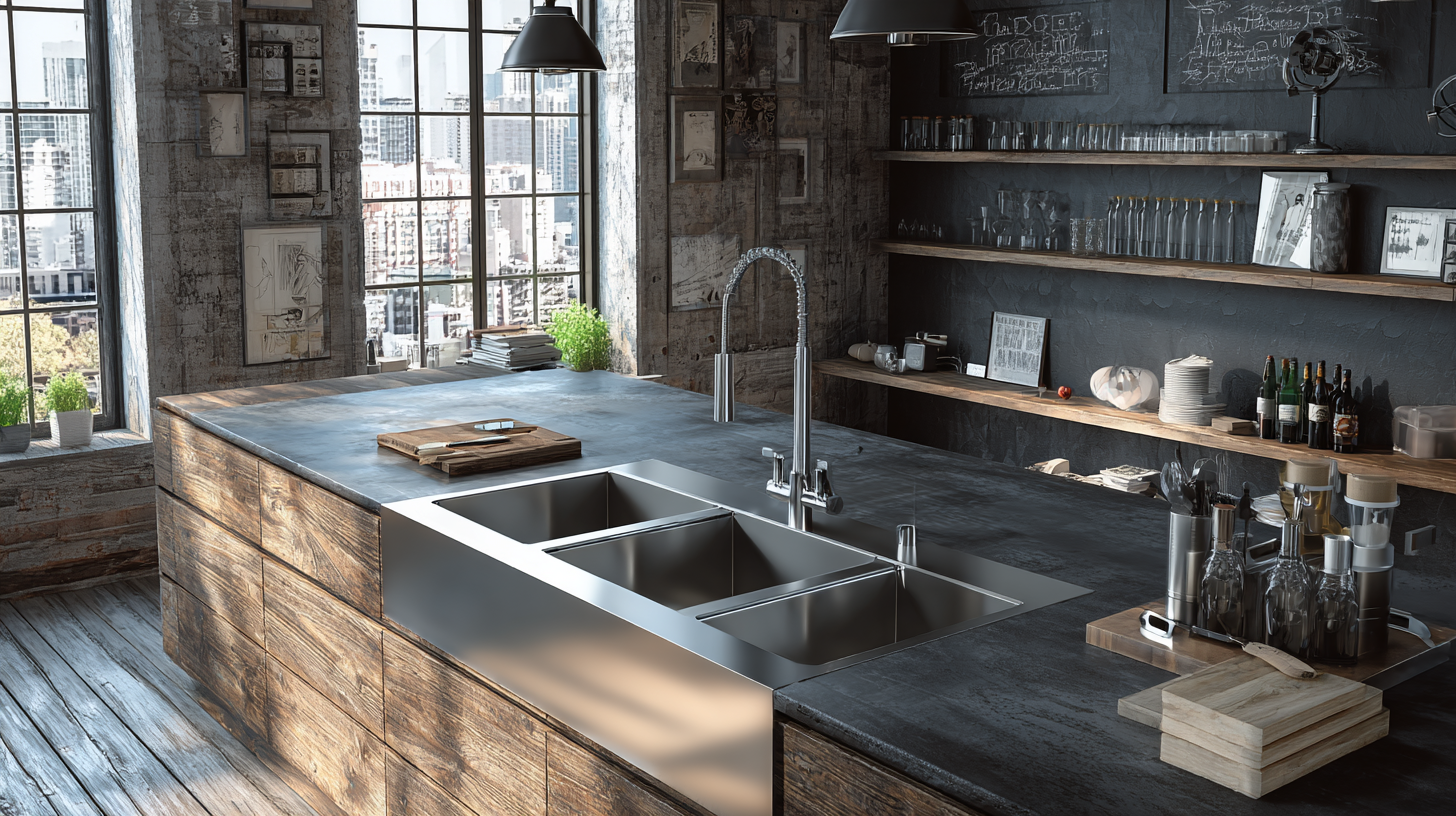When it comes to enhancing the functionality and aesthetics of your kitchen, bathroom, or office area, selecting the right stainless steel sink is crucial. This Ultimate Guide to Choosing the Best Stainless Steel Sink provides comprehensive insights into the various factors that influence your decision, including market trends projected for 2025. With the growing demand for durable and stylish fixtures in both residential and commercial spaces, understanding the nuances of sink types, finishes, and installation styles becomes essential.

From understanding the differences between various grades of stainless steel to exploring the benefits of different designs, this guide aims to equip you with the knowledge necessary to make an informed choice. Whether you’re renovating your kitchen, updating your bathroom, or outfitting your office area, our guide will help you navigate through the options to find the perfect Kitchen Bathroom Office Area Stainless Steel Sink that meets your needs and taste.
Stainless steel has become the go-to material for sinks in kitchens, bathrooms, and office areas, thanks to its blend of durability, hygiene, and aesthetic appeal. According to a report by the Home Improvement Research Institute, over 80% of homeowners prefer stainless steel sinks for their resistance to corrosion and staining. This resistance is crucial in high-moisture areas like kitchens and bathrooms, where water exposure is inevitable. Additionally, stainless steel is non-porous, making it less susceptible to bacteria growth—a significant advantage in maintaining hygiene standards in both domestic and commercial settings.
The versatility of stainless steel also extends to its design and functionality. The National Kitchen and Bath Association reports that modern sink designs often integrate features like deep basins and soundproofing technology, which cater to the needs of busy households and workplaces alike. Furthermore, with a variety of finishes available, such as brushed, polished, or matte, stainless steel sinks can seamlessly fit into any décor style. This combination of practicality and style makes stainless steel an essential choice for anyone looking to enhance their kitchen, bathroom, or office space.
When selecting a stainless steel sink, one of the most crucial factors to consider is the gauge of the steel. The gauge refers to the thickness of the stainless steel, with lower numbers indicating thicker material. Generally, a gauge between 16 and 18 is recommended for kitchen and bathroom sinks, as it strikes a balance between durability and ease of installation. Thicker sinks (16-gauge) are less prone to dents and scratches, making them ideal for high-traffic areas, while 18-gauge sinks provide a lighter option that may be easier to handle without sacrificing too much durability.
Another key aspect of the gauge is its impact on sound dampening. Thicker sinks tend to absorb sound better, reducing the noise of running water and clinking dishes. This is particularly beneficial in open-plan spaces where kitchen noise can disrupt other areas of the home. Additionally, a well-constructed sink with a proper finish can resist staining and wear over time, enhancing its longevity. By understanding these aspects of stainless steel gauge, you can make an informed decision that not only meets aesthetic preferences but also ensures your sink will withstand the rigors of daily use.

When selecting the perfect stainless steel sink for your kitchen, bathroom, or office area, the finish can significantly impact both aesthetics and functionality. The most common finishes available are brushed, polished, and satin.
 A brushed finish is ideal for high-traffic spaces, as it hides fingerprints and scratches effectively, making maintenance easier for busy households or commercial environments. This finish creates a matte texture that complements a minimalist design while still offering a modern touch.
A brushed finish is ideal for high-traffic spaces, as it hides fingerprints and scratches effectively, making maintenance easier for busy households or commercial environments. This finish creates a matte texture that complements a minimalist design while still offering a modern touch.
On the other hand, a polished finish provides a sleek and shiny look that can elevate the elegance of any setting. While stunning, it may require more frequent cleaning as it can show water spots and smudges more readily.
Satin finishes offer a balanced option, presenting a softer shine that resists stains and scratches yet remains easy to clean. Choosing the right finish ultimately depends on your lifestyle and design preferences; it’s crucial to consider how each finish will perform in your specific environment and what maintenance you are willing to undertake.
When selecting a stainless steel sink for your kitchen, bathroom, or office area, one of the key factors to consider is corrosion resistance. Stainless steel sinks are manufactured with various grades of stainless steel, which directly impact their corrosion resistance capabilities. For instance, 304-grade stainless steel, often used in kitchen sinks, offers excellent resistance to rust and corrosion due to its composition of 18% chromium and 8% nickel. This makes it ideal for high-moisture environments typical in kitchen and bathroom settings.
Tips for maintaining your stainless steel sink include avoiding the use of harsh chemicals and abrasive cleaners, which can damage the protective layer of the steel. Instead, opt for mild dish soap and a soft sponge for daily cleaning. Additionally, regularly drying your sink after use can help prevent water spots and maintain its luster.
Understanding industry insights can further enlighten your choice. Recent statistics show that sinks made with higher-quality stainless steel can last significantly longer, with many manufacturers offering warranties up to a lifetime. This long-term value makes investing in a superior stainless steel sink not just a practical choice but also a cost-effective one.
Sustainability in Sink Manufacturing: How Chinese Stainless Steel Exports Lead the Way
The global stainless steel sinks and wash basins market is poised for significant growth, with an anticipated compound annual growth rate (CAGR) of 2.8% from 2024 to 2035. This growth trend is largely supported by the rising demand for eco-friendly and sustainable kitchen and bathroom fixtures. As one of the largest producers and exporters of stainless steel, China is at the forefront of this movement, leveraging innovative manufacturing techniques to minimize environmental impact while maintaining high-quality standards.
Recent developments indicate that India has temporarily suspended anti-dumping duties on specific steel products from China, a decision that could further enhance China's competitive edge in the global market. Additionally, with the global stainless steel HR coil market projected to grow significantly—from 20.98 million tonnes in 2024 to 41.12 million tonnes by 2035, reflecting a CAGR of 6.54%—manufacturers are increasingly focused on sustainability practices, incorporating recycling and eco-friendly materials into their production processes.
Tips: When choosing a stainless steel sink, consider the gauge of the steel; a lower gauge means thicker steel, which typically indicates better durability and resistance to dents. Also, look for manufacturers that prioritize sustainable practices, as this can positively impact the longevity and maintenance of your sink. Lastly, check for certifications that reflect environmental responsibility; these can offer peace of mind regarding the product’s sourcing and manufacturing.
